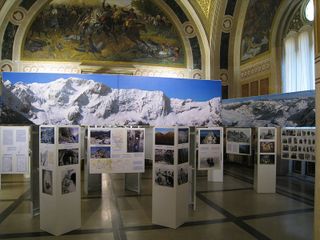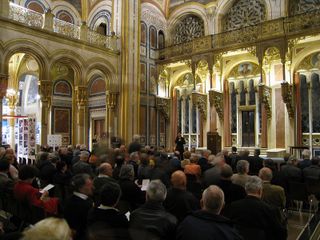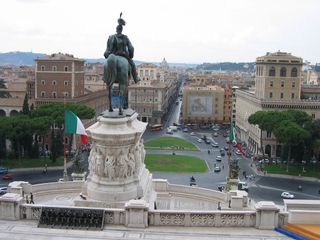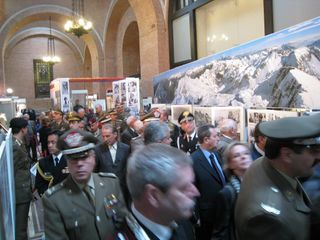The Great War in the Krn Range
22.10.2005 - 08.11.2005The exhibition "The Great War in the Krn Range" recounts historical events during the First World War that took place in the northern, mountainous section of the Isonzo Front. It shows mountains above the valley of the river Soča, where soldiers of numerous nations of the Austro-Hungarian monarchy and Italian soldiers were forced to endure dreadful hardships.
The memory of this battlefield has been, all until today, most vividly alive in Italy, since it was marked with two crucial events: the conquest of Mt. Krn on the onset of the War and the defeat at Kobarid/Caporetto/Karfreit twenty-nine months later. It has been only in the recent decades that interest has grown in the other nations that took part in the War on this front, to which the Kobarid Museum has also contributed a great deal. Its mission has been to recount the story of warfare in the mountains which was particularly merciless to all involved. On the hardly accessible rocky slopes and mountains the destructive power of the enemy’s arms was further intensified by mighty forces of nature – thunderstorms, lightning, severe cold, avalanches, etc.
Giussepe Cordano, member of the Milano Brigade, described the circumstances on the notorious Mt. Mrzli vrh like this:
"A view from this point is wonderful, but at the same time, the view of the area is apocalyptic: formless rocks, broken, scattered, dug up meter by meter by shells, also by those of big calibre. Vegetation is burnt to ashes, just a stunk of trunk here and there. The devastation in the zone between the two trenches is complete. Scattered everywhere are unburied corpses, haversacks, rifles, remains of clothing and parts of human bodies. Between ours and the enemy’s positions, there are only about fifteen metres of distance here and there. We are divided by heaps of rocks and small ravines, sometimes even vertical."
(Giussepe Cordano, Diario di un fante, Quaderni della Società Storica per la Guerra Bianca 2, Milano 1997, p. 47.)
Nowadays, visitors to the Soča Region and the Kras can discover the forgotten front and the one-time battlefield along one of the most beautiful European rivers. On learning about warfare devastation, suffering and casualties, and on seeing the amazing beauty of the river, the mountains and nature, they are faced with numerous questions and considerations about war, peace, human fate.
Unforgettable impressions get imprinted on the mind of all who ascend from the valley up to the height of 2000 metres of Mt. Krn, and up the steps, cut into the rocks by the Italian alpini, to the neighbouring Mt. Batognica. The panorama from these mountains is one of the most beautiful views that the entire Julian Alps can offer. Their southern rim is so exposed that from this position the eye can reach in the north the majority of the Julian Alps with their highest peak, Mt. Triglav, and the mountains in Austria; the mountains on the Slovenian-Croatian border in the east; the Adriatic Sea, the coast of Istria, the Gulf of Trieste, the mouth of the Soča at the Adriatic and the Venetian lagoons in the south; and the Dolomiti mountains beyond the Friuli lowlands in the west. A view over this small portion of Europe, where the Slavic, the Romance and the German worlds meet, symbolizes the vision to which the greatest Slovenian poet, France Prešeren (1800 - 1849), wrote a toast more than 150 years ago. One stanza of the poem is now the Slovenian national anthem and bears the mission of peace:
... God’s blessing on all nations,
Who long and work for that bright day,
When o’er earth’s habitation
No war, no strife shall hold its sway;
Who long to see
That all men free
No more shall foes, but neighbours be. ...
(Janko Lavrin's translation)






